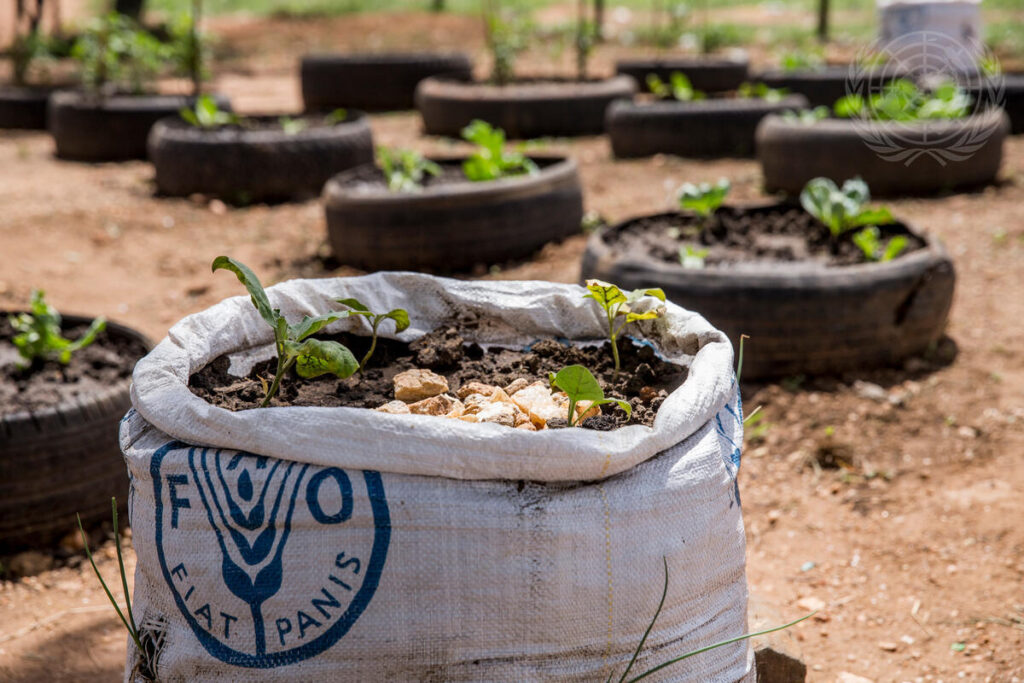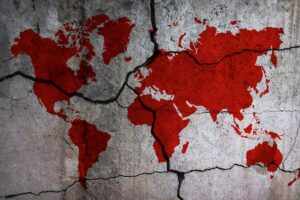The Red cell project
The Red Cell was a small unit created by the CIA after 9/11 to ensure the analytic failure of missing the attacks would never be repeated. It produced short briefs intended to spur out-of-the-box thinking on flawed assumptions and misperceptions about the world, encouraging alternative policy thinking. At another pivotal time of increasing uncertainty, this project is intended as an open-source version, using a similar format to question outmoded mental maps and “strategic empathy” to discern the motives and constraints of other global actors, enhancing the possibility of more effective strategies.
For the past several decades, development experts have strived to implement models aimed at spurring Africa’s economic growth and enabling human prosperity. Stakeholders have accurately identified and explained the various causes behind Africa’s slower growth, and several paths have been tested — from emulating Asia’s export-growth model to using technology to leapfrog development. Although countries such as Kenya and Rwanda have made significant progress in recent decades, many African states struggle to transform massive investments into economic gains.
The failure of earlier approaches to spur development underscores the limitations of merely applying models that have been successful elsewhere. Africa confronts a unique set of problems. In the near term, the region’s most fragile states risk being stuck in a polycrisis — an interconnected, cascading set of issues, including debt, climate impacts, financial flow constraints, food insecurity, and conflict.
In addition to causing food insecurity, the COVID-19 aftermath and the war in Ukraine have led to higher energy prices, inflation, and a global economic slowdown, exacerbating Africa’s debt problem and impeding its growth prospects. Even as parts of Africa see progress on governance reform and achieve economic gains, nations face increased vulnerability as they grapple with global challenges like climate insecurity.
In the longer term, African development will become more challenging in an increasingly fragmented, protectionist, region-centric global economic system. The Organisation for Economic Co-operation and Development (OECD) estimates that net official development assistance to Africa fell by 7.8% in real terms in 2022. This context should prompt international partners and African governments alike to reconsider the impact of their development strategies on the continent.
Infrastructure-Linked Debt is Now a Major Obstacle to Development
The region’s debt has grown substantially during the past decade and is a major impediment to Africa’s growth. According to the World Bank, 22 African states are facing debt distress or the risk of it. The continent’s public debt has tripled since 2010 to $645 billion, with annual servicing of the debt amounting to about 25% of Africa’s GDP. This predicament may not be resolved until the end of this decade.
Much of African countries’ external debt has resulted from infrastructure investment, which was touted in the 1980s and early 1990s as the solution for African development. Underlying this strategy was the assumption that mega infrastructure projects would spur an export-growth model of industrialization, similar to that of East Asian states. The African Union (AU) also considers infrastructure development a key priority in its Agenda 2063, notably to support continental integration, necessary for the execution of the African Comprehensive Free Trade Agreement (AfCFTA). But a recent Carnegie Endowment paper by a prominent Kenyan economist, David Ndii, argues that this strategy failed to significantly spur growth or industrialization.
Many other development experts agree. The 40% growth per capita witnessed between the mid-1990s and the mid-2010s has fallen since then, while debt has increased and African manufacturing has remained nearly static at about 12-14% of GDP. This situation could be linked to what some experts have called the “African infrastructure paradox.” According to a 2020 McKinsey report, “Most infrastructure projects in Africa fail to reach financial close.” The paradox is that “there is funding, a large pipeline, and a need for spending, but not enough money is being spent” to complete the projects. Some experts have argued that addressing the root causes of the infrastructure issue could help to produce positive results. Others advocate shifting investments to other areas, such as agriculture and the informal sector — which, according to the International Monetary Fund, comprises “activities that have market value and would add to tax revenue and GDP if they were recorded.” These analysts assess that such a shift would more effectively address the needs of Africa’s population.
Reorienting African Development Policy
Attempts to reproduce the Asian industrialization model geared toward exports of manufactured goods do not work in Africa because of the many differences — political, social, economic, and security — between Asia and Africa. By highlighting the economic and structural differences between African and Asian states, Ndii makes a persuasive case for a strategy to move from low- to higher-productivity agriculture. A World Bank paper agrees that providing public goods in rural areas can boost agricultural productivity.
According to the United Nations Conference on Trade and Development, in 2020, “Africa-wide, just 2.1% of public budget expenditures were dedicated to agricultural spending,” four points below the 10% agreed in the 2014 Malabo Declaration and the 2003 Maputo Declaration, both aimed to support agricultural growth. This very low level of investment persists, despite the reality that as of 2021 agriculture employed 52% of workers in sub-Saharan Africa. As advocates of agriculture-led growth argued nearly two decades ago, the agricultural sector also needs infrastructure investment (irrigation, energy, transport) to enable living standards to rise beyond mere subsistence.
However, the misalignment between different stakeholders’ interests is a challenge for securing greater support of the agricultural sector. According to Ndii, while investors seek “passive investments with low transaction costs such as sovereign bonds and derisked infrastructure projects . . . an agricultural transformation requires public goods, research, and extension services (agricultural advisory services), and policy and institutional development interventions that address the pervasive market failures characteristic of agriculture.”
Those arguing for agriculture-led development do not reject all forms of infrastructure investment. Rather, they would orient infrastructure to better enable access to basic state services. By supporting the agricultural sector, governments and their foreign partners could boost productivity, alleviate poverty, and address food insecurity — important elements to spur the development of other sectors. Moreover, investing in agriculture should be done with climate change imperatives in mind.
Sustainable development strategies should primarily focus on the needs of African peoples, rather than on foreign partners’ interests in making Africa another major manufacturer and service center for their national consumption. An agriculture-focused development strategy prioritizes the needs of Africa’s population, contrary to large infrastructure projects that aim to spur export-led growth. The latter is intrinsically extractive. As a recent Wilson Center paper states, “Increasing demand from Asia for natural resources and minerals is driving the need for port and rail infrastructure to move these commodities around the globe.” But such projects often fail to deliver tangible benefits for populations in Africa.
Exploiting Africa’s Huge Informal Sector for Development
The AU is striving to implement the AfCFTA, which took effect in January 2021 and is designed to build a single African market for goods and services. Though the implementation of the AfCFTA faces challenges, including the need to harmonize policies, as well as to diversify the production of goods and the provision of services across the continent, opportunities exist to elevate existing local development models to support the agreement. The informal sector generates tremendous profits and represents “nearly 83% of employment in Africa” according to the United Nations Development Programme. According to the World Bank, the sector is characterized by “low productivity, resulting in low and irregular earnings” and is a challenge to development because it operates outside government-established legal, economic, and taxation frameworks. Moreover, informal entrepreneurs often have low levels of numeracy and literacy, which also limits their access to formal financing mechanisms.
Yet, many experts from Africa and beyond have cited the opportunity that the sector represents for economic development and employment, including for the most marginalized (including women and youth), both in and outside the agricultural sector. International actors should explore how to bolster investment, and in partnership with African stakeholders, push informal businesses toward formal frameworks that will enable them to be better integrated into the economy. Elevating informal businesses would increase their productivity and generate dividends for workers. This move would also provide increased tax revenues for the government to use to finance basic state services such as worker social protection and to invest in critical sectors like education.
Developing creative financing systems is key to tapping into and boosting the informal sector. Local solutions exist. The tontine, for instance, is a micro-credit financing system in which women form groups and contribute to a funding pool that is allocated to one of them and will eventually be reimbursed with no interest. As the African continent also seeks to accelerate its digitization, an opportunity exists to bolster micro-financing and mobile banking, which enables African entrepreneurs to overcome the challenges posed by traditional banking systems.
The African continent has been leveraging the digital sector for years, and it is a leader in the use of mobile banking in the informal sector; it has begun expanding to healthcare, education, and agriculture. According to a 2022 Global System for Mobile Communications Association report, in 2021, mobile transactions across sub-Saharan Africa totaled $697.7 bn, almost 70% of such transactions globally. Mobile banking allows informal entrepreneurs to make and receive payments, save, and obtain loans.
Nonetheless, this system has limitations, including the costs associated with the use of a phone, the lack of network coverage, limited literacy for some parts of the population, or more generally, perceived security risks. These limitations particularly impact women, the youth, and rural populations, Efforts to improve access to mobile banking and to structure the informal economy, both within countries and across borders, and develop endogenous lending, savings, and investment mechanisms, could unlock greater potential. These efforts are just a few of the ways stakeholders can adapt solutions to the needs and specific challenges that African informal businesses face.
Such solutions should not be viewed as mutually exclusive, or as the sole solution to African development. Instead, they should be in line with national and continent-wide development agendas. Success will depend on vastly improved governance, open global data regimes, the right mix of regulation and investment, environmental conditions, transparency, the creation of welcoming financial environments to incentivize local and foreign investment, and an expansion of Africa’s tourism industry. Investing in the true software of development — human capital — is essential.
The Role of Outside Actors
A precondition for Africa achieving such a new development trajectory is for OECD nations to qualitatively ramp up G-20 efforts in the Common Framework — working with China — to relieve debt stress. But as the United States channels its expenditures toward Ukraine and to counter China and Russia across the planet, investment with African partners is likely to be threatened. Therefore, African partners will have to continue investing, and, more importantly, to reorient development channels. In the case of Western governments and multilateral development institutions, partners will need to significantly shift resources from a primary focus on mega infrastructure projects to other critical areas like agriculture, the informal sector, and climate-related issues.
African countries’ governments and international partners need to acknowledge that endogenous solutions already exist. They should commit to working with champions of change who understand local contexts, actors, and habits to ensure that international and national policies reflect the realities on the ground.
This is a tall order in the current global economic situation, with possible recessions looming, U.S. bank problems, and the fragmenting international economic system. But absent such efforts, Africa will be left muddling through as the rift between the West and the Global South grows ever larger.




